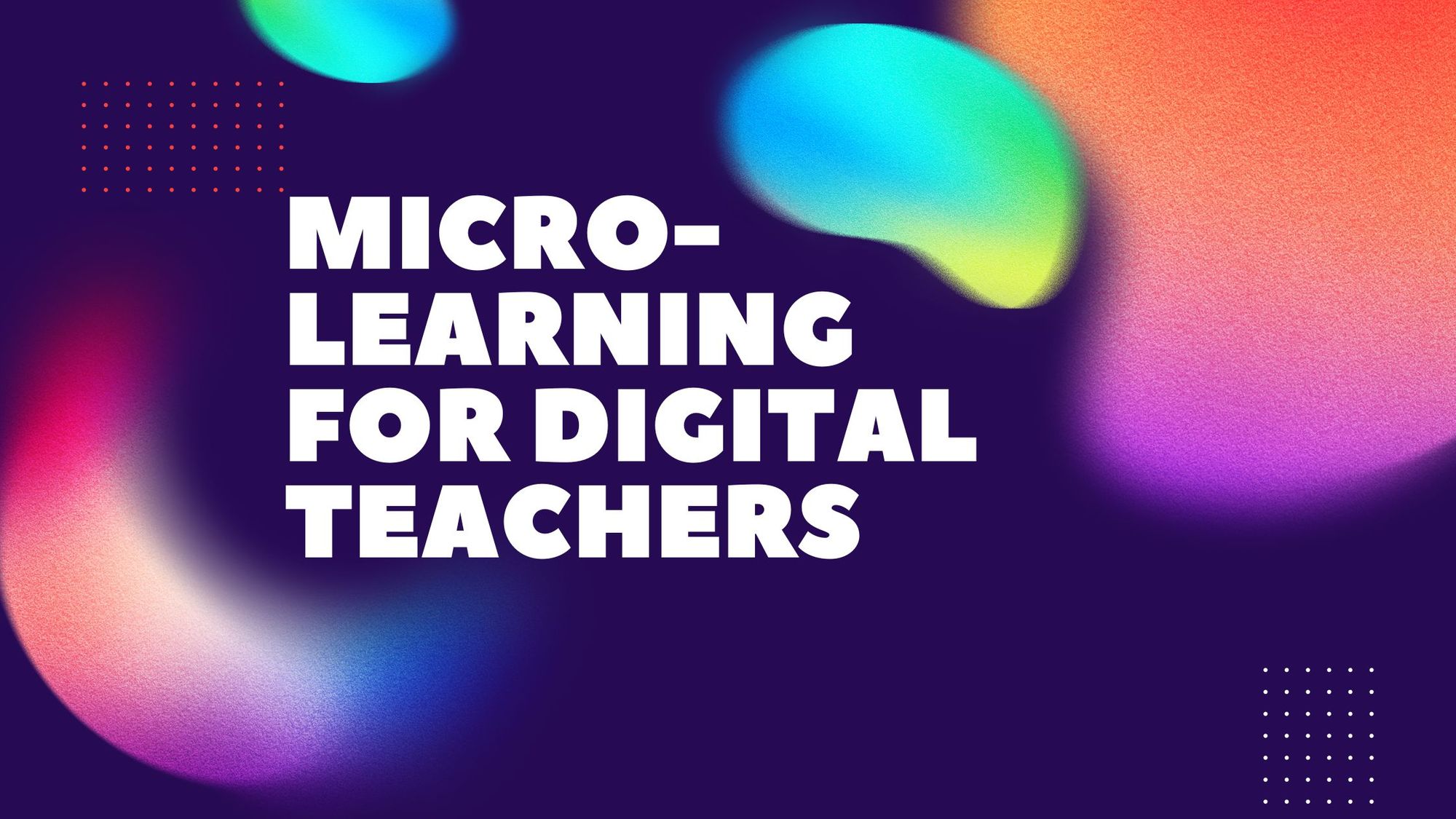The microlearning approach not only assists learners in retaining pertinent knowledge, but it also creates a fun and engaging learning journey for students. It offers tremendous potential for tech-based education, likely revolutionizing the way virtual school is conducted in the future.
Benefits of microlearning
Microlearning enables students to concentrate on individual topics, allowing them to better comprehend the material. It offers learners more meaningful ways to engage with the content than traditional online courses. Quick bursts of learning during class time enable learners to keep up with a faster pace and move swiftly onto another subject.
Through microlearning, educators can maintain complete authority over lesson delivery and remain cognizant that their classes are strengthened by it. This approach grants teachers the ability to provide prompt feedback, which ultimately leads to an interactive instructional atmosphere.
Microlearning encourages an active and self-directed learning experience that enables learners to absorb information quickly and effectively. Additionally, it streamlines the process of finishing a course by cutting time off the duration.
Through the delivery of content in brief intervals, virtual teachers can promptly target specific areas without having to rely on lengthy lectures. Microlearning provides tremendous advantages for virtual educators and learners alike, revolutionizing the education system.
Here are eight tips for improving virtual education through the use of microlearning.
Create clear objectives
Before implementing microlearning, it is essential to have a clear understanding of objectives for the course or lesson plan. This enables users to focus on the most important points and ensure student engagement. Furthermore, having set goals will ensure that users create the most effective microlearning modules possible.
When setting objectives for a course or lesson plan, it is important to consider the specific outcomes desired of your students. This could include learning new information, developing certain skills, and demonstrating their understanding of certain concepts. Additionally, it is beneficial to involve students in the process of creating objectives to ensure they are engaged and motivated.
Break down topics
With your objectives in place, it is time to partition the material into smaller parts or modules for a microlearning approach. This will allow you to focus on one specific topic or skill set at a time. Each module should be relatively short, lasting no more than 10 minutes to keep learners engaged and motivated.
Chunking is an effective way of helping students stay focused in online learning environments, as it reduces the amount of information they have to process and remember at once. By breaking down larger topics into smaller pieces, students are able to focus on one particular aspect at a time and gain greater comprehension and retention of the material.
Try Markup Hero
Ready to make amazing graphics and annotated visuals?
Start using Markup Hero to take screenshots, annotate images and PDF's and become a lesson planning expert.
Signup For FreeUtilize multimedia resources
Incorporating multimedia resources into virtual learning can be a great way to keep students engaged and motivated. Using videos, images, infographics, podcasts, and quizzes helps break up long lectures or monotonous reading material, providing visual interest, auditory ability and making tough academic concepts more digestible.
It's important to ensure that multimedia resources work efficiently for virtual classroom settings. To do this, it's best to clear out any clutter or unnecessary files from your computer, leaving enough storage for the resource-heavy materials. Doing so will prevent devices from slowing down and impacting the learning process.
Provide timely feedback
To ensure the success of your virtual education program with a microlearning approach, it's important to incorporate timely feedback. To do this, consider adding assessments at the end of each module such as quizzes, practice exercises or written responses. This will help provide students with the opportunity to demonstrate their understanding of the material and give you an indication on how well they are absorbing what is being taught.
The feedback you provide can be tailored to the individual needs of each student based on the data from assessments. This personalized feedback can help identify and address any areas of weakness or confusion in students' understanding of the material. It is also a great tool for measuring how well each student is progressing, allowing you to better support their learning experience.

Incorporate spaced repetition
Spaced repetition is a powerful learning tool for reinforcing information from previous lessons or modules without overloading the learner. It works by introducing previously taught material again at regular intervals throughout the course, helping learners to better retain and remember what they have learned. Incorporating this technique into your virtual education program is a great way to maximize learning success.
One of the ways to maximize the productivity of virtual education through spaced repetition is to use learning software or apps that use this technique as part of their curriculum. Education entrepreneurs can take advantage of these tools to automatically schedule review sessions for their students. By creating a learning software or app with built-in spaced repetition, they can personalize it to fit their own curriculum and objectives. Spaced repetition is a powerful way to ensure that learners understand and remember material better over time, which can lead to greater success in the future.
Use gamification elements
Incorporating game-like elements into lessons can help keep learners engaged even when they are working remotely. Point systems, leaderboards, badges, achievements, and rewards can motivate learners. These gamification elements give them tangible goals while learning. It can also be fun and engaging for students.
Gamification can encourage classroom collaboration as it creates a sense of competition and teamwork among students. Online games and simulations motivate students to collaborate and engage with each other more actively. Similarly, a point system creates a sense of shared purpose for students who work on group projects.
Make content accessible
To ensure that all learners are able to access your content, regardless of device, make sure you have mobile-friendly versions of any content. Additionally, double check that all links work on both desktop computers and mobile devices - this will help to ensure everyone has equal access to the material. By taking these steps, you can rest assured that no student is left behind in their learning journey!
With the right tools, design, and testing, you can create an optimal user experience that is both mobile- and desktop-friendly. By offering learners a seamless experience regardless of their device, you can give everyone an equal chance to succeed in their learning journey. Making sure all content links are tested on both desktop computers and mobile devices will help ensure that the material is fully accessible.
Leverage technology tools
Technology tools can be great for making virtual learning more interactive and engaging. Instructors can use these tools to monitor student progress in real-time, as well provide personalized feedback where needed. Utilizing technology tools can help keep students motivated and on track with their lessons, while giving them the opportunity to interact with peers and instructors. By incorporating these tools into your virtual classroom, you can make sure nobody is left behind!
Conclusion
Virtual education is here to stay. And that means we need to find ways to make it more engaging for students. A microlearning approach is one way to do that. By using smaller, more manageable content, you can keep students engaged and improve virtual education. Try out these eight tips and see how your students respond.


